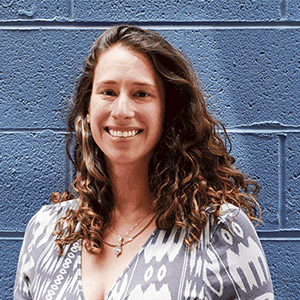
Guest post brought to you by Caity Belta, Engagement Manager, Bang the Table
____________________________________________________________________________________
As an Engagement Manager at Bang the Table, I often find myself addressing the same set of big questions for our clients. Post COVID-19 and in our current social climate, those questions tend to look something like this:
- How have other municipalities successfully reached a tough-to-engage population?
- What are some success stories or steps others have taken to engage on race, equity, and inclusivity?
- How do I begin to address issues of systemic racism in my community in a meaningful way that includes everyone?
So when I found myself scrolling through Instagram, landing on ELGL’s Instagram takeover du jour, I was simply elated to click through a series of thoughtful, easy to understand, and thought-provoking content from Eugene, Oregon’s planning department. Here’s something that I had to learn more about!
In this month’s webinar, I hope to not only answer the above questions; but to provide an exclusive look into what got me so excited – the experience behind doing engagement work through an anti-racist lens and involving various stakeholder groups in the process. I’ll be interviewing Sophie McGinley, an Associate Planner from the City of Eugene, OR. Through this interview, we hope to help start the conversation around discussing race, equity, and inclusivity both in your community and internally. We will also incorporate how to creatively tap into hard-to-reach populations, how to define success, and how to strategically plan along the way.
One could argue that we’re discussing two high-level, separate, concepts here:
- Engaging hard to reach populations
- Engaging through a lens on race, equity, and inclusivity
It is my view these two dynamics are so intricately intertwined, that they share many points of intersection when we’re discussing best practice. So, for our purposes, I am going to include both of these concepts in tandem throughout our discussion.
I’d like to highlight a few general best-practice points that I use to answer the aforementioned questions. It’s always difficult to really provide answers for clients beyond the usual ‘lip service’. This is because everyone’s community is so unique, diverse, and special that tailoring an answer to any one community, without having an intimate understanding, is really doing a disservice.
However, I can provide some quick-hitting general concepts that do apply for almost everyone and that all inform the above inquiries in one way or another:
7 things to consider when engaging hard to reach populations on race, equity, and inclusion:
- Have a clear ‘why’ and continually address and call back to it.
- Think critically about where your hard to reach population ‘shows up’ and how they typically engage with the world around them, at a high level.
- Identify potential points of contact or avenues you can utilize to get their attention.
- Commit to a strategy that meets the needs of your community and addresses common barriers to participation.
- Have an internal discussion and understanding about what success looks like – both for your organization and for your community.
- From an analysis perspective, be sure to evaluate outcomes and objectives at the beginning. Do you need qualitative data for decision-makers? Quantitative? A mixture of both? Plan for closing the loop & making sense of your data.
- Call out potential pain points and be prepared for them. We
can’t ensure that everything goes right, but we can take steps to be prepared.
On December 1, 2020, at 2 pm MT – Join Sophie  McGinley, Assistant Planner with the City of Eugene, Oregon, and Caity Belta, Engagement Manager at Bang the Table, as they discuss preparation, implementation, fears, and successes when conducting public engagement through an anti-racist lens.
McGinley, Assistant Planner with the City of Eugene, Oregon, and Caity Belta, Engagement Manager at Bang the Table, as they discuss preparation, implementation, fears, and successes when conducting public engagement through an anti-racist lens.
